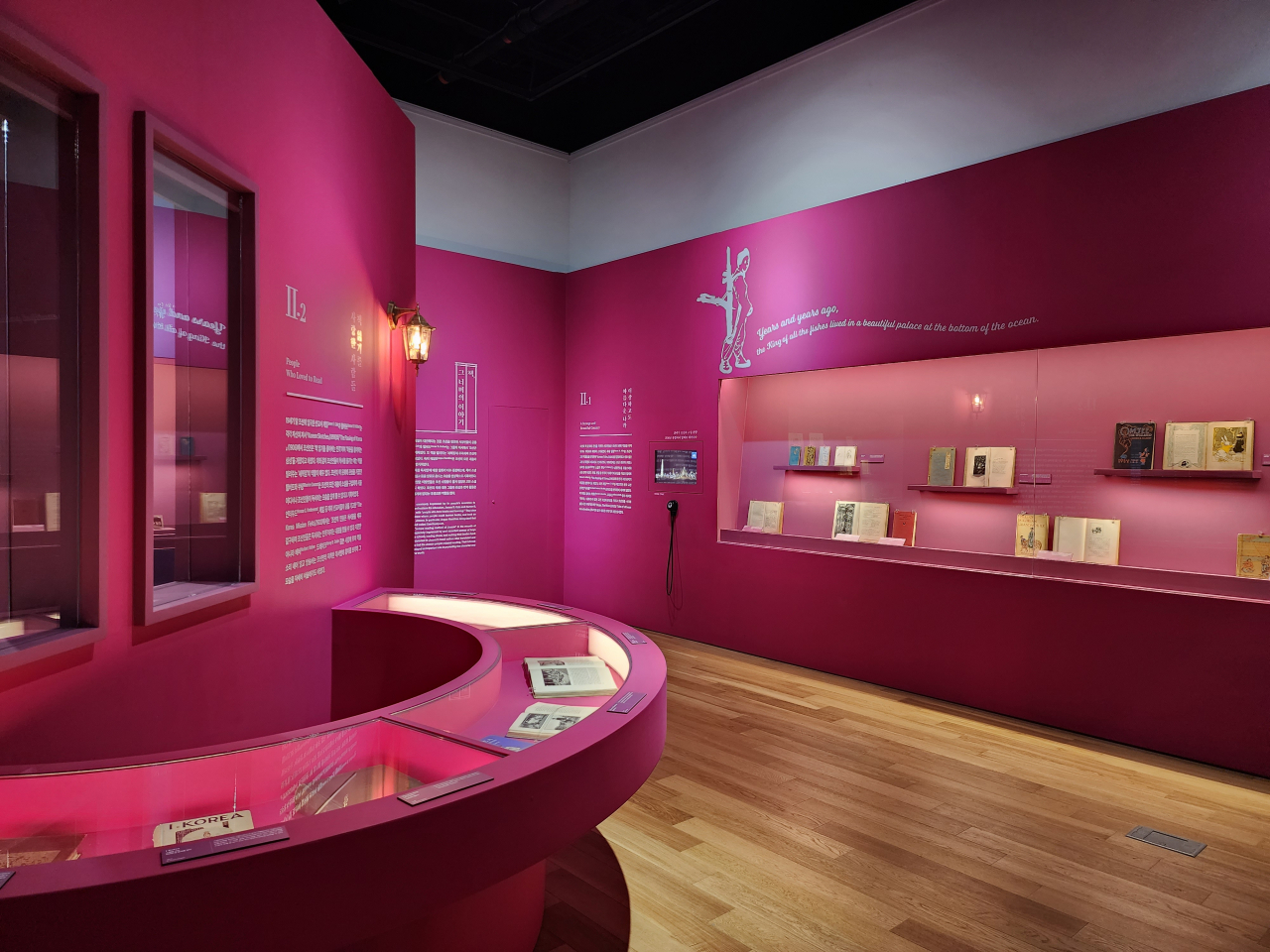 |
A leaflet for “Welcome to Joseon” (Songpa Book Museum) |
It was at the end of the 19th century that Westerners knocked on the doors of Joseon, a mysterious country unknown to the West.
A special exhibition exploring how Joseon was seen in the eyes of foreigners who visited the country after the ports opened in 1882, kicked off Jan. 13 at Songpa Book Museum, located in Songpa-gu, southern Seoul.
The exhibition “Welcome to Joseon” displays about 140 books, paintings, photos and videos, following the records of Joseon in books or writings. Books published during this time by foreign visitors cover a wide range of topics, including printing technology, literature, language and grammar, architecture, and lifestyle.
 |
A view of “Welcome to Joseon” exhibition (Hwang Dong-hee/The Korea Herald) |
The exhibition is divided into five sections.
The first section, “Joseon Meets the World,” features books and journals published before and after the country opened its ports in 1882. Many Westerners including explorers, diplomats and missionaries entered Korea following the opening.
“General History of Voyages” (1749) by French author and missionary Antoine Prevost features a map of Joseon and “Story of the wreck of the Sperwer yacht” by Hendrick Hamel. Hamel was the first Westerner to provide first-hand accounts of Joseon.
Also on display are Isabella Bishop’s travelogue “Korea and Her Neighbors” (1897) and Maurice Courant’s “Bibliographie Coreene,” (1894, 1899) in which the French scholar wrote about old books of Joseon.
“The Story Beyond the Books” section introduces journals on Joseon’s reading culture and lifestyle. They chronicle the unique reading culture in Joseon, especially scenes of boys sitting together in "seodang," or village schools, reading aloud classic textbooks together.
Some who were interested in Korean stories translated and adapted classic novels or oral narratives that the Joseon people enjoyed. A Canadian missionary translated “The Cloud Dream of the Nine” (1922) while French author J. H. Rosny wrote “Chunhyang” (Printemps Parfume in French) (1892).
The exhibition also explores how Joseon was depicted visually -- on canvas, picture books, photographs and videos.
A 50-minute documentary video by German priest Norber Weber is screened at the end of the exhibition. Weber shot the video while traveling through Seoul, Busan, Wonsan and Mount Kumgang in 1925.
The museum is open Tuesday to Sunday, from 10 a.m. to 6 p.m. For the Lunar New Year holiday, the museum is closed on Jan. 22 and 24.
The exhibition runs until Aug. 31. Admission to the museum and the exhibition is free.







![[Today’s K-pop] Blackpink’s Jennie, Lisa invited to Coachella as solo acts](http://res.heraldm.com/phpwas/restmb_idxmake.php?idx=644&simg=/content/image/2024/11/21/20241121050099_0.jpg)